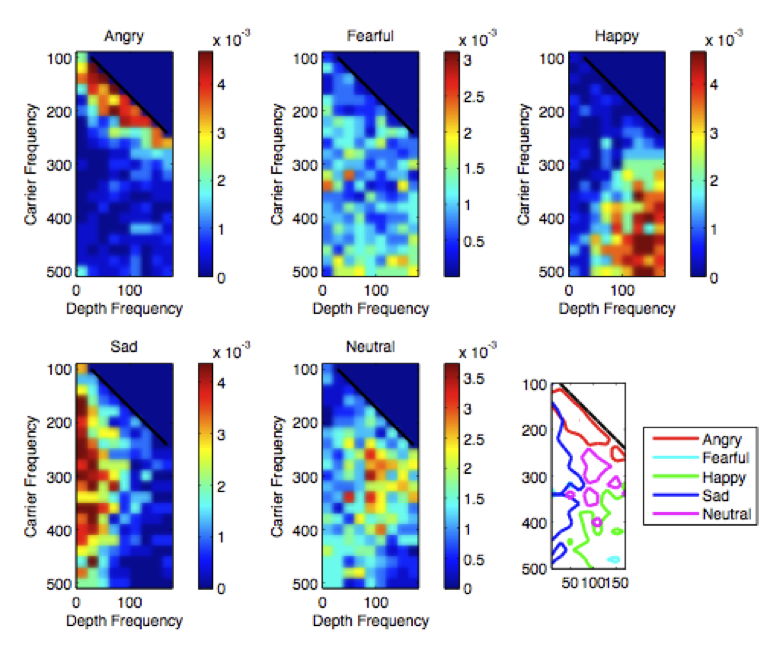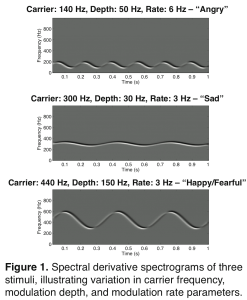 Basic Research Questions
Basic Research Questions1. Are carrier frequency and modulation depth cues sufficient enough to convey prosodic intent?
2. Can this acoustic space be mapped in order to determine the existence regions of basic emotions?
3. To what degree do responses to these tones reflect the use of pitch in actual prosodic processing?
Affective communication through vocal tone (prosody) is a core channel of interpersonal interaction. Previous research has indicated that the perception of pitch and pitch change as reflected in fundamental frequency (F0) and F0 variability provide crucial cues in identifying the internal emotional states of others. For example, high pitch mean and variability characterizes excitement and happiness while low mean pitch and low pitch variability in speech is often perceived as fear or sadness. This suggests that overall pitch mean and variability, regardless of temporal structure, may be sufficient to communicate emotional intent. We decided to construct a series of sinusoil frequency modulated (FM) tones whose carrier frequency (fc) and modulation depth (Δf) would correspond to the F0 mean and standard deviation ranges seen in typical affective prosody (Juslin & Laukka, 2001). We are interested in mapping this acoustic space in order to determine the “existence regions” for basic emotions.

Clinical Application
•Examining affect perception using abstract tones gives us insight into the cues used to convey prosody in speech, an important piece of social communication.
•Determining the precise cues will allow us to target remediation to improve prosodic perception, which will thereby increase social communication skills.
Behavioral Task
FM Tones
References
Juslin, P. N., & Laukka, P. (2001). Impact of intended emotion intensity on cue utilization and decoding accuracy in vocal expression of emotion. Emotion, 1(4), 381–412. doi:10.1037//1528-3542.1.4.381
Plack, C. & Carlyon, R. (1995). Differences in frequency modulation detection and fundamental frequency discrimination between complex tones consisting of resolved and unresolved harmonics. Journal of Acoustical Society of America, 98, 1355-1364. doi: http://dx.doi.org/10.1121/1.413471
Comments are closed.